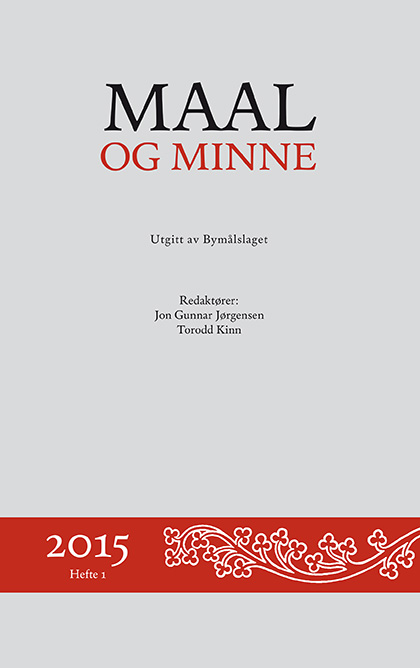Sammendrag
Sverre Bagge has recently restudied the relationships of the various versions of Hákonar saga Ívarssonar and arrived at strikingly new conclusions.1 He favors the view that the account in Morkinskinna is the earliest version and is drawn from oral tradition (2014: 13). The author of Heimskringla (most likely Snorri) subsequently reworked this account on the basis of a conjecture that Hákon Ívarsson belonged to the lineage of the jarls of Hlaðir. The revision also involved a reordering of the chronology (2014: 9-10). The somewhat differing version of the story in Hákonar saga Ívarssonar, represented by four fragments of the fifteenth-century manuscript AM 570a, 4to, and a Latin "Compendium" found among the papers of Anders Sørensen Vedel, had previously been regarded as an early version from the beginning of the thirteenth century and hence as a source for Heimskringla.2 But Bagge concludes that it is a late version based on Heimskringla (2014: 4-8). The present paper returns experimentally to the view that Hákonar saga Ívarssonar is the oldest version, probably in some relationship to *Hlaðajarla saga, that the version in Morkinskinna was recorded independently from oral tradition, and that the version in Heimskringla is based on Hákonar saga with possible additions from Morkinskinna. Before entering into the details of this discussion, I will try to facilitate the comparison of the texts with an overview in tabular form.Forfattere beholder opphavsretten og gir tidsskriftet rett til første publisering av arbeidet. En Creative Commons-lisens (CC BY-SA 4.0)Â gir samtidig andre rett til å dele arbeidet med henvisning til arbeidets forfatter og at det først ble publisert i dette tidsskriftet.

